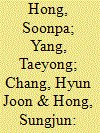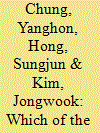|
|
|
Sort Order |
|
|
|
Items / Page
|
|
|
|
|
|
|
| Srl | Item |
| 1 |
ID:
171478


|
|
|
|
|
| Summary/Abstract |
Renewable energy electricity, such as photovoltaic (PV) power generation, has the benefits of strengthening energy security, addressing climate change, reducing air pollution, etc., but there are some impediments to deployment of renewable energy electricity: higher costs than fossil fuels, intermittent energy production, site constraints, etc. Korea changed its renewable energy electricity support systems from feed-in tariff (FIT) to a renewable portfolio standard (RPS) in 2012. This study evaluates FIT versus RPS in terms of the time to reach grid parity for PVs. Using a learning curve model, we calculate the learning rate of PV power generation during the FIT and RPS periods. We find that the PV learning rate during the RPS period was 18.44%, much higher than that during the FIT period, −0.28%, and R2 is 0.9861 and 0.7346 in the RPS and FIT periods, respectively. Using the calculated learning rate in the RPS period, we also predict that grid parity for PVs is expected in 2025 in Korea.
|
|
|
|
|
|
|
|
|
|
|
|
|
|
|
|
| 2 |
ID:
127200


|
|
|
|
|
| Publication |
2014.
|
| Summary/Abstract |
In order to evaluate the alternative technologies for producing hydrogen in Korea stage by stage, we searched for impact factors, calculated the weights of them and evaluated the hydrogen production technologies in Korea using analytic hierarchy process (AHP) approach. The AHP is a useful method for resolving multi-criteria decision making problems. We investigated 4 criteria (technical characteristics, economic efficiency, marketability, internal capability) and 11 sub-criteria (scale, efficiency, key barriers, carbon dioxide reduction, current production cost, expected production cost in 2017, feed-stock, technical maturity, R&D competitive level, technology gap with competing agencies, and domestic infrastructure). And the alternatives are natural gas reforming technology, coal gasification technology, biomass gasification technology, water electrolysis technology, thermochemical production technology, photoelectrochemical hydrogen production technology, and biological hydrogen production technology. In order to maintain the objectivity of the analysis result and observe the difference among the groups, the questionnaire survey targets were divided into the R&D professional group and policy professional group. This result of study is expected to serve as important basic information in the establishment of a national R&D strategy to prepare for the imminent hydrogen economy era.
|
|
|
|
|
|
|
|
|
|
|
|
|
|
|
|
|
|
|
|
|